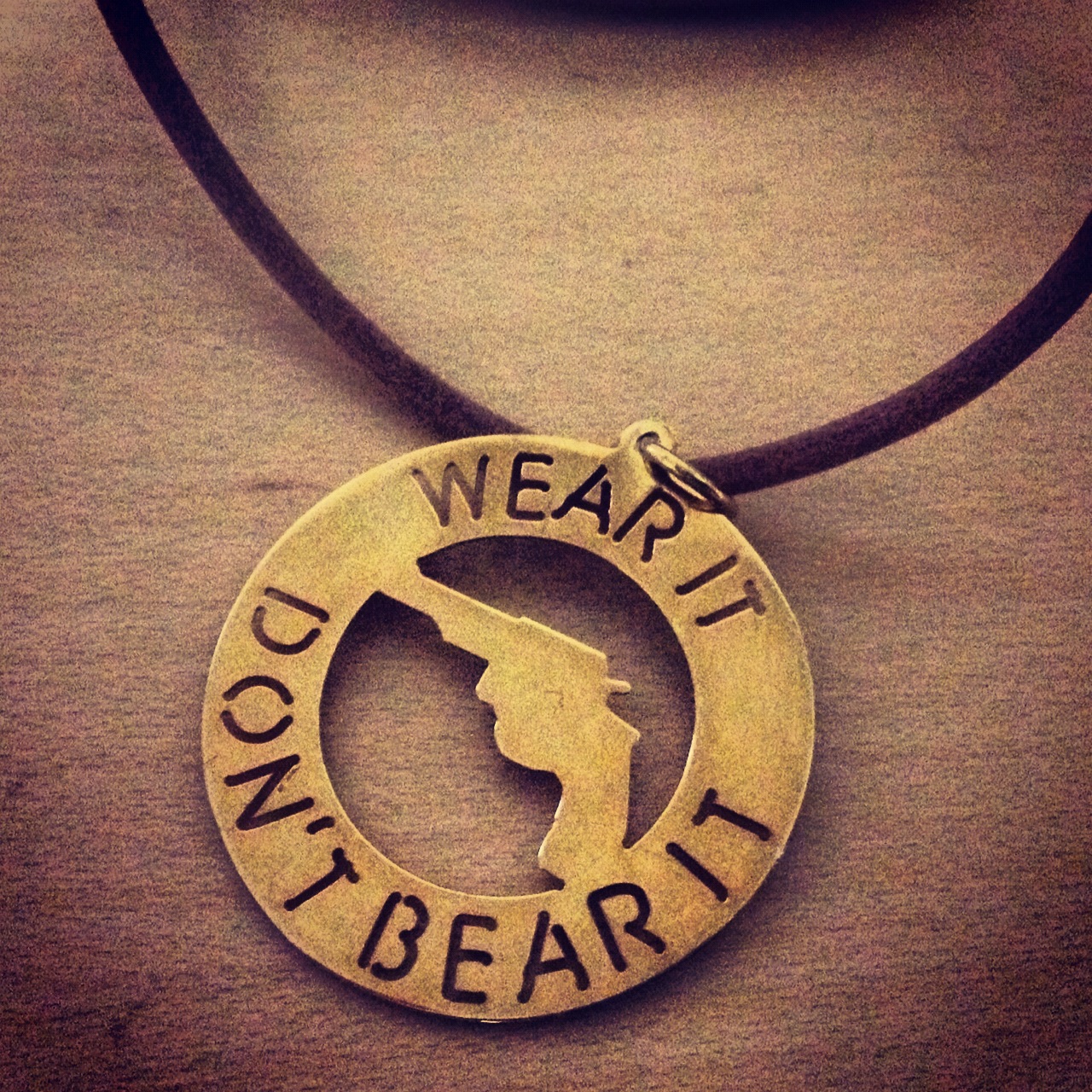The gun has gravely earned multiple connotations in our national psyche -- mass tragedy, personal loss, political polarization, socio-economic disparity and institutional failure chief among them. However, somehow "fashion statement" has wedged itself between otherwise reprehensible associations. Gun and weapon iconography are one of few symbols for which society has permitted itself a kind of cognitive dissonance in the interest of fashion and self-expression.
The fetishization of guns in pop culture, and their association with power and pretension, appears in the 1980s with Andy Warhol's Guns and has gained momentum throughout the aughts. Rihanna proudly bears an ink pistol on her ribs (an emblem with deeply personal associations, to be sure) as well as vintage Chanel gun earrings. Madonna heralded a pistol-heel trend in 2008, and Karolina Kurkova donned an AK-47-patterned dress days after the Boston Bombings and its aftermath, which involved a shoot out.
Should we be concerned about gun iconography in high fashion? Certainly, women buying Chanel gun heels and 14k gold pistol necklaces are not often those inclined to perpetrate mass murders. There is no evidence that exposure to gun insignia in clothes or jewelry results in increased violence. But associating guns with power -- and in fashion's case, often wealth -- imbues them with an aspirational quality that seems irresponsible, if not dangerous, even on a subconscious level.
Guns, however, are an image from which symbolic weight cannot be drained. Nor should it, says Barnard College senior Toby Milstein. Rather than crusade against the use of weapon imagery in fashion, Milstein has channeled it towards a statement that neither trivializes an instrument of death, nor stigmatizes its aesthetic significance. "Wear It, Don't Bear It," a non-profit Milstein started following the shooting in an Aurora, Colo. movie theater, sells pendants that displays the symbol while advocating its containment.
Far from a commercial endeavor, Milstein designed the pendant as a personal way to bridge the intellectual gap between guns as lethal weapons and as a fashion statement. All profits from sales go to the Bereaved Parents of the USA.
"I'd never designed jewelry before. I'm a history major. I'd never done anything creative like that." she says, "But after Newtown, there was a strong revulsion I felt towards guns glamorized in fashion... In the fashion and art world, guns are pervasive as symbols of power, status and a kind of edginess. But to what end is pretty ambiguous. The idea of Wear It, Don't Bear It was to steer [the use of gun imagery] in a more positive direction."
Milstein agrees that guns on designer t-shirts are not likely to promote their use among those with the purchasing power to wear them, but by simply existing and earning profits, they demonstrate a desensitization to a symbol we should regard with suspicion.
"I knew we couldn't get rid of these symbols, but I still couldn't reconcile, you know, seeing Virginia Tech and seeing Karolina Kurkova's gun dress, or Columbine with Rihanna's Chanel pistol earrings," Milstein says "And we shouldn't have to anymore."
Other socio-political movements have attempted to reorient or invert meanings of words or symbols. The gay community has taken back words typically used as epithets in an attempt to drain them somewhat of their ability to insult. The Slut Walk, started in Canada in 2011, disobeys calls for women to dress more conservatively in the interest of preventing assault. Like these movements that invoke the symbol in order to reject it, Milstein knew the gun had to be front and center.

"My use of an actual gun has been a bit controversial. I don't think you can say it as well -- and really send the message -- without it there. The 'it' in 'Wear It, Don't Bear It' needs to be a gun. There's something provocative about what the gun mean suggests, of course. But the cigarette in a No Smoking sign is what gives it its weight. It needs to be there for the message to really register. "
For better or for worse, women's ability to protect themselves has long been implicit of a feminist movement. Rosie the Riveter's display of strength engendered a huge cultural moment, Thelma & Louise's taking of casualties has been referred to as neo-feminism and most strong female characters in contemporary television are strong only to the extent they have license to kill (Law and Order: SVU, Homeland). Why do women have to appear threatening as not to be threatened? If women's access to power depends on their ability arm themselves, as we have been conditioned to believe, how women choose to dress themselves -- and the insignia they choose to bear -- may also reflect this model.
"Psychologically, we're so drawn to these symbols of aggression," Milstein says. "Girls in pictures pose like Charlie's Angels. Andy Warhol made his gun poster, and that's still part of culture now. In order to define what's acceptable, we have to set boundaries. Set up parameters and say 'Okay, there's really a trend here, but let's focus it and make a statement.' My statement is not anti-rights. To the same extent one has the right to wear whatever want, one has the right to buy a gun -- but both need to be done with an understanding of what it means; with a recognition of that responsibility."
Indeed, other social entrepreneurs have capitalized on the saliency of gun control, with jewelry designer Jessica Mindich collaborating with Snoop Lion to create bracelets from melted-down illegal guns bought back by the Newark police department and Peter Thum, founder of Ethos water, is also working with government agencies to create jewelry from guns and bullets.
Accepting that the gun cannot be disassociated from power is a step towards honest conversation of its cultural and aesthetic significance, and as Milstein advocates, "Gun control, and talking about what can be done to prevent future deaths, can really be the cause of our time," Milstein says. "Fashion is an easy way to bridge this gap between wanting to do something and actually doing it."
